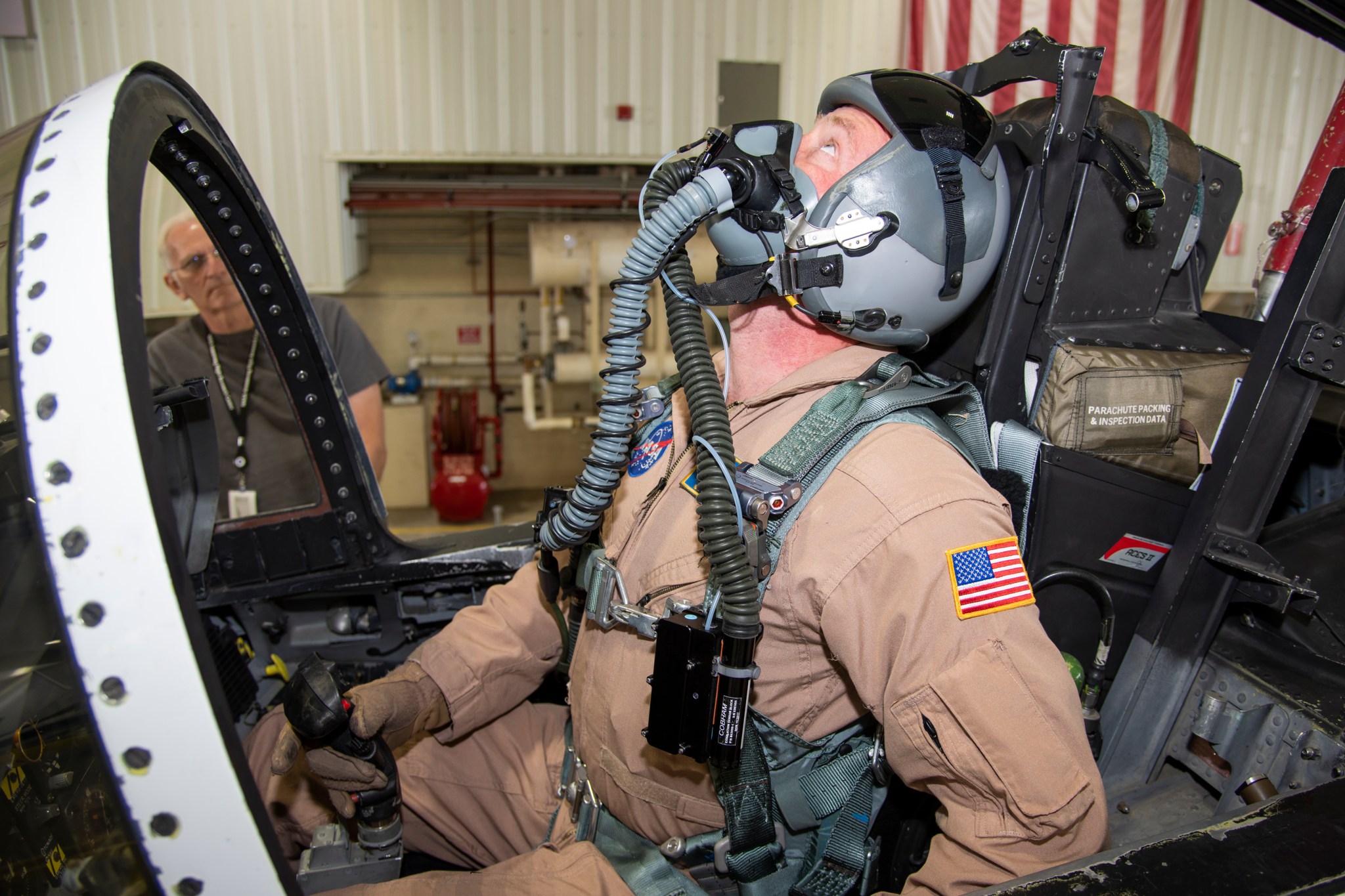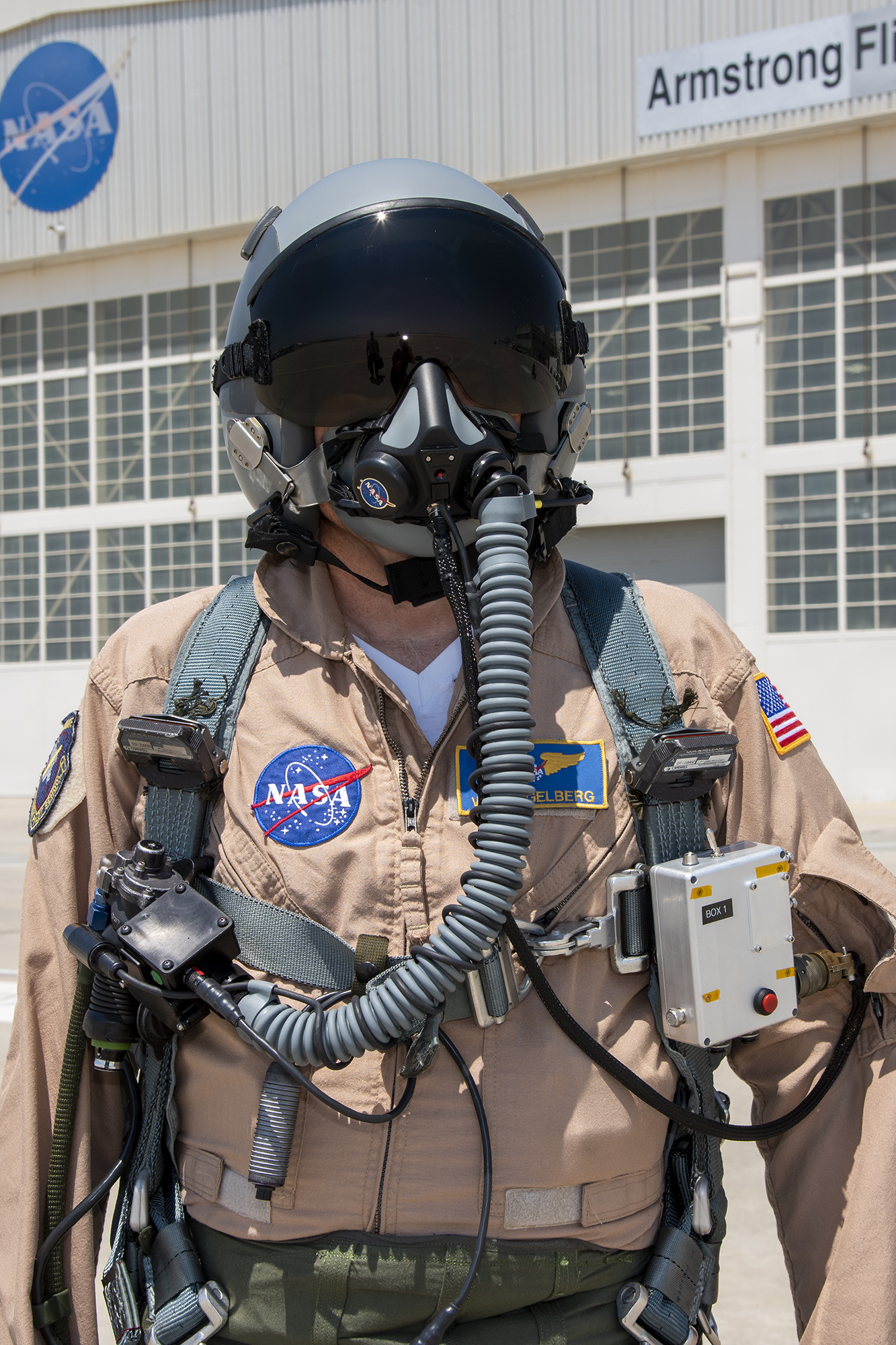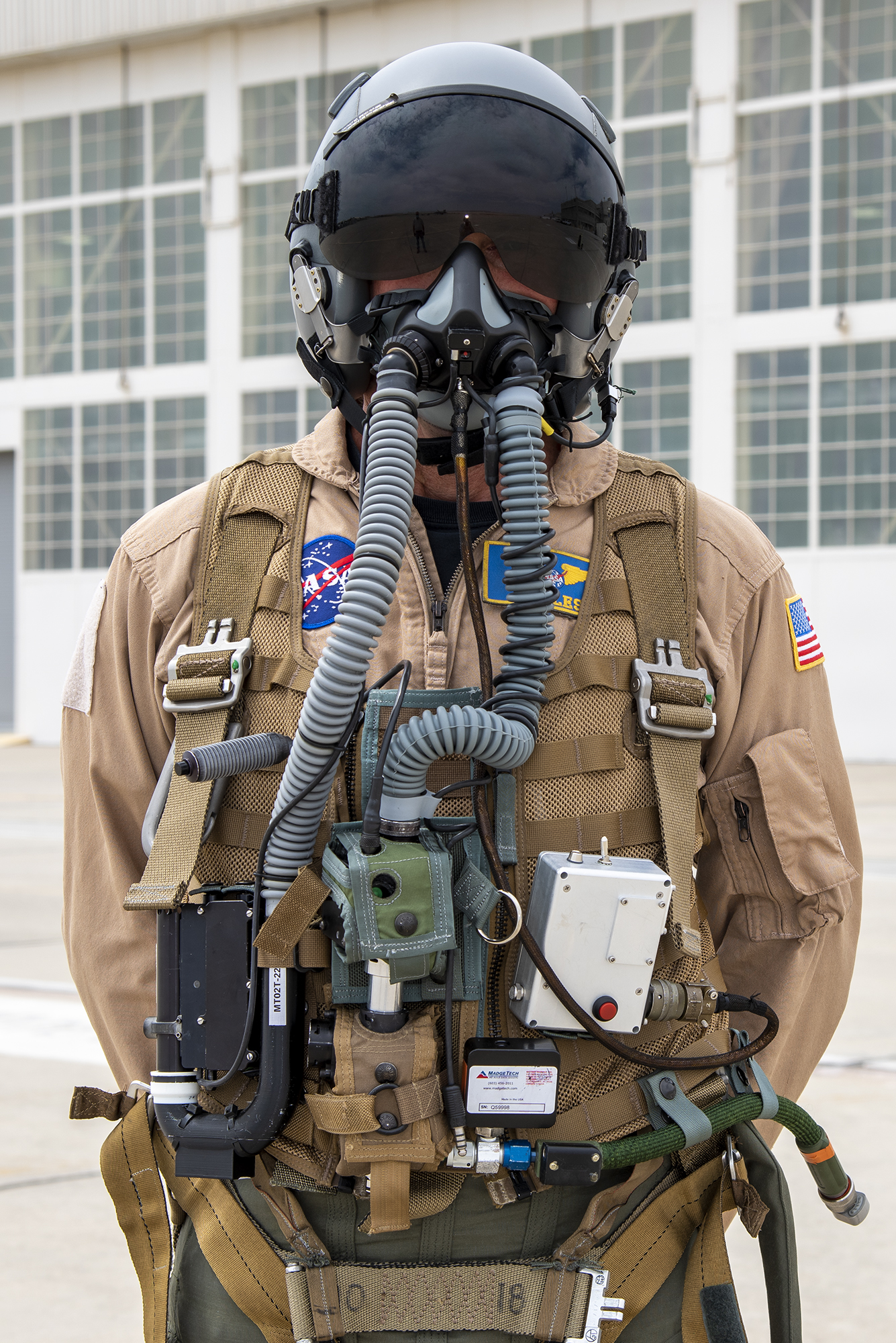Credits: AFRC TV
The second and final phase of NASA’s Pilot Breathing Assessment (PBA) program to analyze pilot breathing in high-performance fighter jet aircraft is now complete.
The program began with phase one in early 2018, and involved five pilots, four aircraft, two aircrew equipment configurations and approximately 90 hours of flight at NASA’s Armstrong Flight Research Center in California.
Phase two started in fall 2019, and the program added an additional 50 flight hours. The research pilots primarily flew F-18 A/B aircraft to eliminate variables between jets, and the group refined data collection procedures, equipment and sensors.
“This study is focusing on how a pilot’s physiology and the jet’s oxygen system interact,” said research pilot Jim Less. “There isn’t a lot of data available on this, and pilots are having an increased number of unexplained physiological incidents.”
The NASA Engineering and Safety Center (NESC) at Langley Research Center in Virginia formed the group to gather missing pilot breathing data. The team believes this data collection is key to explaining the rising number of physiological challenges flyers experienced in the cockpits of U.S. Navy and U.S. Air Force jets since 2010.
When fighter jet aircraft like NASA’s F-18 A/Bs and F-15Ds take to the skies, pilots wear oxygen masks and other equipment to help the pilots breathe at high altitudes and when making high g-force turns. While flying a variety of scenarios, the extent to how well the pilot’s lungs are transmitting oxygen to the brain can fluctuate, which can sometimes result in a physiological episode (PE). A PE can include cognitive impairment, numbness, tingling, lightheadedness, behavioral changes and fatigue, which may be life threatening for a pilot.
Several milestones were added to phase two, which focused on refined methods to gather data from Navy and Air Force oxygen mask regulator systems and in testing cabin pressure in the F-18 A/B.
The PBA program uses two aircrew equipment configurations of oxygen mask regulator systems, one from the Air Force and the other from the Navy to gather appropriate data. The team was able to test both types with more flights on the F-18 A/B aircraft for direct comparison. The two configurations behave differently and when reviewing the data the team noticed several advantages to using the Air Force version.
In addition to oxygen regulators the pilot wears while flying, fighter jets have built-in cabin pressure regulator systems. These systems maintain the proper cabin pressure while in flight. The pilots noticed fluctuations while flying and these changes in pressure on the pilot’s body and regulator can cause unexpected interactions. An experiment was designed to de-pressurize the cabin to remove cabin pressure as a testing factor. Then the results were compared to a flight with the cabin pressurized to see how it affected the pilot.

Standardized Test for Pilot Breathing
As a result of the pilot breathing studies, the team is developing a standardized breathing system flight profile for other organizations to use in the future. The team hopes this can serve as a starting point for testing pilot breathing systems on new aircraft, for troubleshooting problems on existing aircraft, and for confirming systems are fixed after maintenance is performed.
Currently, individual components of a breathing system are checked separately on the ground, but there is no end-to-end check of the complete system to make sure it is delivering the proper pressure and concentration of oxygen to the pilot.

NASA’s Jet Propulsion Laboratory (JPL) Oxygen Mask
JPL scientists in Pasadena, California, have been developing laser sensor systems for spacecraft to measure the concentration of different gasses in the atmosphere. The project partnered with JPL to see if this technology could be miniaturized and put into an oxygen mask.
This new mask uses laser sensors to determine levels of carbon dioxide and water exhaled inside the mask. The mask was tested in conjunction with the current VigilOX system, which measures a number of key parameters including the pilot’s oxygen concentration, breathing pressures and flow rates. The VigilOX system data is collected in two small boxes, one at the beginning of the inhalation tube and the other at the end of the exhalation tube that connect to the pilot’s mask. The mixing of gases in the tube inevitably leads to a less accurate data reading than measuring directly from a pilot’s mouth. The JPL in-mask sensors gather data directly in the pilot’s mask to get the most accurate readings possible.

Pilot Variables
Many variables go into one flight test. Pilot variables can include rest, exercise, diet, hydration, or how often the pilot flew that week, which can all affect the data outcome. During this study, research pilots were subject to pre-and-post flight surveys that ask questions such as what they ate for breakfast, if they exercised, and if they noticed breathing differences in flight.
In phase two, the team continued to rely heavily on the NASA Armstrong Life Support team to prepare pilots for flight with all equipment needs and to gather appropriate data. Life support continued to have the pilot complete spirometry, capnography, and pulse oximetry tests twice before and after each flight.
A spirometry test, measures how much air the pilot can breathe out by exhaling as forcefully and as long as they can. Capnography monitors the pressure of carbon dioxide. A separate device monitors the pilot’s pulse, oxygen saturation in their blood, breathing patterns and blood hemoglobin. The tests are repeated post-flight to measure and compare breathing patterns to identify any changes.
Flight testing is complete and now the NESC will publish a report from the data from both phases. Researchers will compare data among pilots, flights, configurations, aircraft performance and look for patterns or unexpected results that may help researchers understand the causes of a PE. The team hopes others will use the results in the future and for more research to continue.
“About 100 flights or so is not a lot of data compared to the thousands of hours military aircraft are flying,” Less said. “Our team learned a lot about pilot breathing needs and complex systems interactions, but we only scratched the surface with this study, and there is still work to be done.”

































